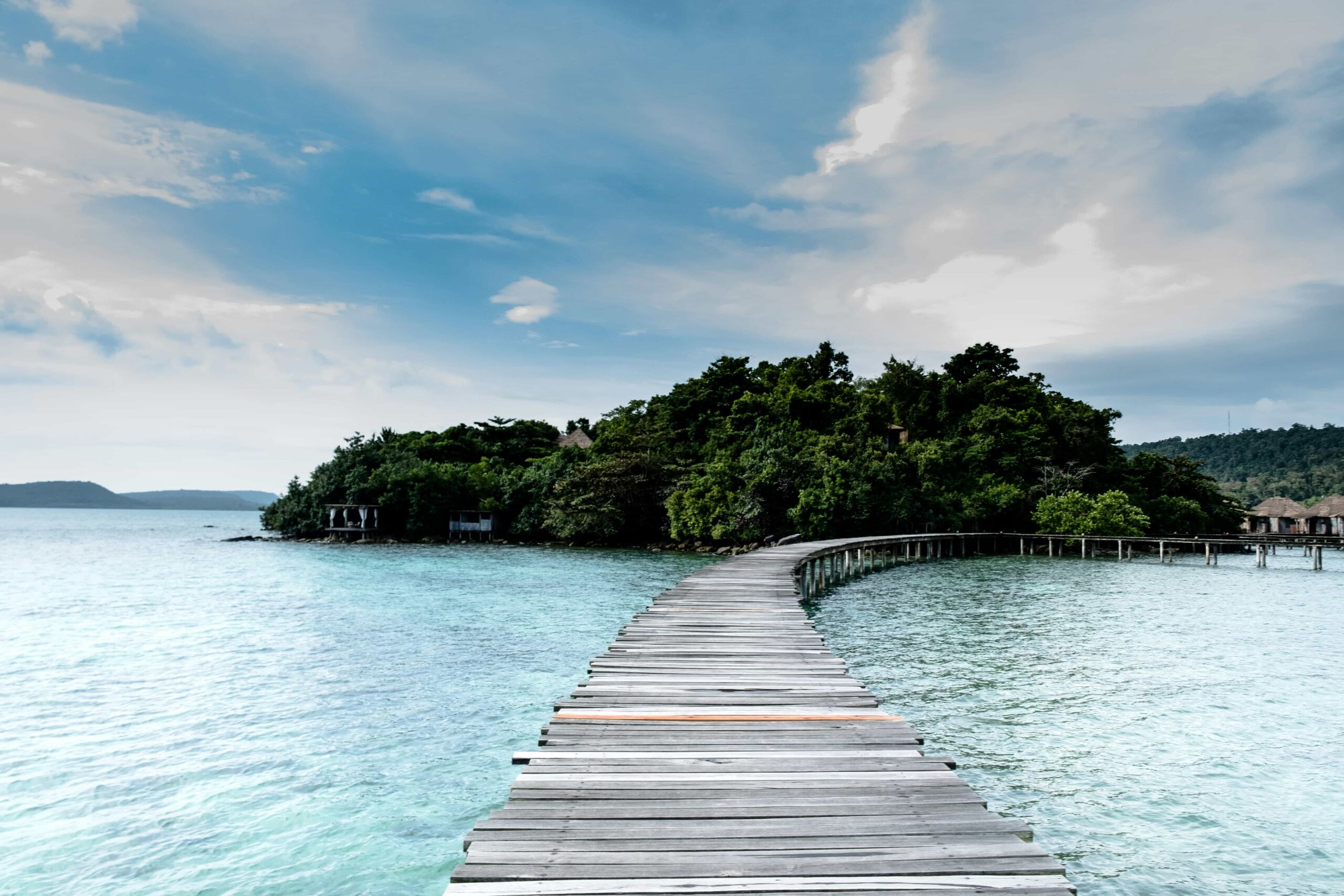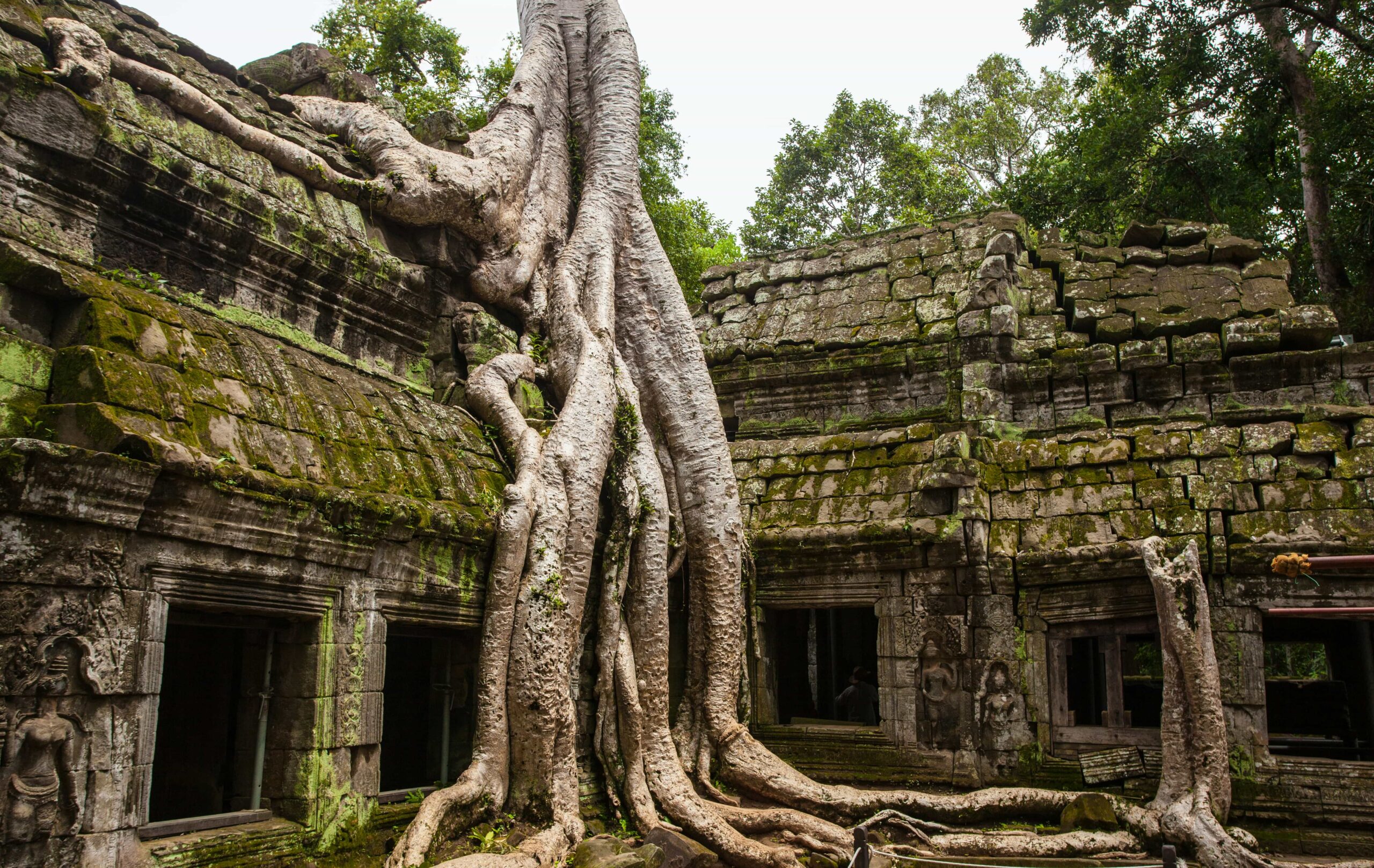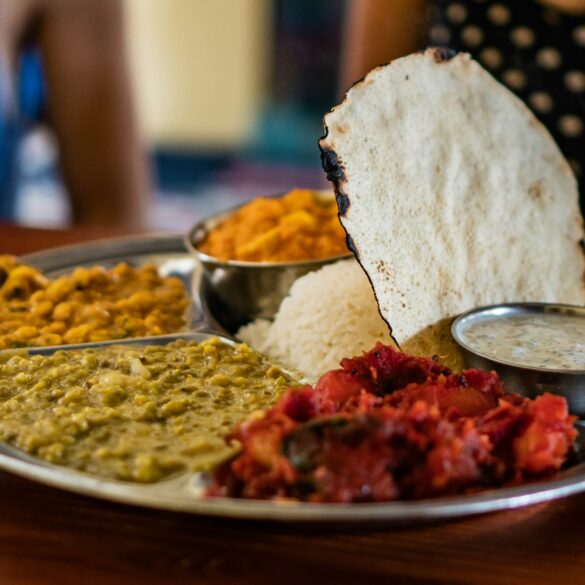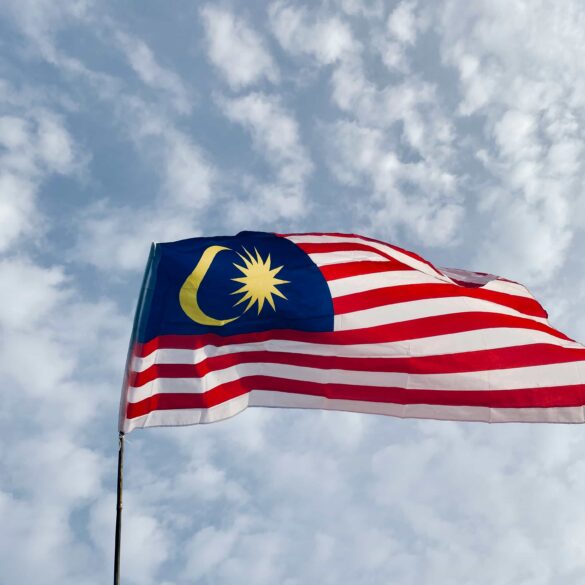Your Complete Cambodia Travel Guide: Beyond Angkor Wat
Honestly? I wasn’t prepared for Cambodia. Sure, everyone talks about Angkor Wat—and don’t get me wrong, it’s absolutely spectacular—but what really got me was this moment in a Phnom Penh café when an elderly gentleman started teaching me basic Khmer phrases over morning coffee. That’s Cambodia for you: a country where ancient wonders coexist with genuine human warmth that’ll catch you completely off guard.
Having spent the better part of three years exploring Southeast Asia, I can tell you that Cambodia occupies this unique space that’s both mystical and surprisingly accessible. The temples are mind-blowing, obviously, but it’s the street food vendor who remembers your order, the tuk-tuk driver who becomes your unofficial city guide, and those spontaneous conversations that happen everywhere—these are the experiences that stick with you long after you’ve forgotten which temple had the best sunrise view.
Cambodia Quick Facts
Official Language: Khmer (English widely spoken in tourist areas)
Currency: Cambodian Riel (KHR) and US Dollar
Best Time to Visit: November to March (dry season)
Population: Approximately 16.7 million
Time Zone: UTC+7 (same as Bangkok and Hanoi)
Visa Requirements: Tourist visa required for most nationalities
Look, I’ll be completely upfront about this—Cambodia isn’t always easy. It’s a country that’s still healing from its past while rapidly modernizing, and sometimes you’ll encounter infrastructure challenges or cultural misunderstandings. But here’s the thing: those moments of slight discomfort often lead to the most authentic experiences. Actually, thinking about it now, some of my favorite travel memories happened precisely when things didn’t go according to plan.
What I love most about sharing Cambodia travel insights is how dramatically the country has evolved over the past decade. The Cambodia I first visited in 2019 feels quite different from today’s version—better infrastructure, more sustainable tourism options, and an increasingly confident local hospitality industry. Yet somehow, it’s maintained that authentic charm that makes every visit feel like a genuine cultural exchange rather than just sightseeing.
This guide combines practical planning advice with cultural insights I’ve gathered through multiple visits, conversations with local guides, and more than a few happy accidents along the way. We’ll cover everything from visa requirements to temple etiquette, budget planning to sustainable tourism practices. Most importantly, I want to help you experience Cambodia the way it deserves—with respect, curiosity, and genuine appreciation for its incredible heritage.
Essential Planning: Timing Your Cambodia Adventure
Here’s something I learned the hard way—and I mean really the hard way, involving an unexpected monsoon and very soggy temple exploration—timing matters enormously in Cambodia. The country essentially has three distinct seasons, and choosing the wrong one can significantly impact your experience. Let me walk you through what actually works versus what looks good on paper.
Seasonal Considerations and Weather Patterns
The dry season (November through March) is typically considered peak travel time, and honestly, there’s good reason for this1. Temperatures hover around 25-30°C (77-86°F), rainfall is minimal, and temple exploration becomes genuinely pleasant rather than an endurance test. But—and this is important—it’s also when prices peak and crowds are heaviest.
| Season | Weather | Pros | Considerations |
|---|---|---|---|
| Dry Season (Nov-Mar) | Cool, minimal rain | Perfect temple weather, clear skies | Higher prices, more crowds |
| Hot Season (Apr-May) | Very hot, 35-40°C | Fewer tourists, lower prices | Extreme heat, challenging for walking |
| Rainy Season (Jun-Oct) | Afternoon storms, humidity | Lush landscapes, dramatic skies | Transport delays, muddy conditions |
Actually, let me revise something I just said—I’ve grown quite fond of the rainy season, particularly September and October. Yes, you’ll get afternoon downpours, but the countryside transforms into this incredibly lush, green landscape that’s absolutely gorgeous for photography. Plus, those dramatic storm clouds over Angkor Wat? Breathtaking.
Budget Planning Reality Check
Cambodia remains one of Southeast Asia’s most budget-friendly destinations, but costs have definitely increased over recent years2. When people ask me about daily budgets, I always say it depends enormously on your comfort level and travel style—but here’s what I’ve observed:
- Backpacker Budget ($15-25/day): Dorm beds, street food, local transport, self-guided temple tours
- Mid-Range Comfort ($40-70/day): Private rooms with AC, mix of local and tourist restaurants, organized tours
- Comfortable Travel ($80-150/day): Boutique hotels, guided experiences, air-conditioned transport, spa treatments
- Luxury Experience ($200+/day): Premium resorts, private guides, helicopter transfers, fine dining
Money-Saving Insight
Here’s something most guides won’t tell you: Cambodia operates on a dual currency system. US dollars are widely accepted (sometimes preferred), but you’ll receive change in Cambodian Riel. Always carry small denominations—trust me on this one. Getting change for a $20 bill when buying a $2 meal can become unnecessarily complicated.
Visa Requirements and Entry Logistics
The visa situation is refreshingly straightforward compared to some neighboring countries. Most travelers can obtain a tourist visa on arrival ($30 USD) or apply for an e-visa online beforehand3. I personally prefer the e-visa route—it saves time at the airport and eliminates any potential hassles with documentation.
One thing that caught me off guard initially: make sure your passport photos meet the specific requirements. I’ve seen travelers get stuck at immigration because their photos were slightly off-size or the background wasn’t perfectly white. It’s a minor detail that can create major headaches.

Must-Visit Destinations and Cultural Immersion
Let’s be honest—everyone comes to Cambodia for Angkor Wat, and rightfully so. But if you stop there, you’re missing probably 70% of what makes this country extraordinary. I’ve made the mistake of rushing through destinations, and I’ve also spent way too long in others. Here’s what I wish someone had told me before my first visit.
Angkor Archaeological Park: Beyond the Postcard
Angkor Wat gets all the Instagram fame, but honestly? It’s just one piece of a much larger archaeological puzzle4. The entire complex covers over 400 square kilometers, and there are temples here that’ll take your breath away without the selfie-stick crowds.
My personal favorite? Ta Prohm, where massive tree roots have literally grown through the temple structures. It’s like nature and architecture decided to collaborate on something completely magical. But here’s a pro tip: visit early morning or late afternoon. The midday crowds can be overwhelming, and the lighting isn’t great anyway.
- Sunrise at Angkor Wat: Yes, it’s touristy, but it’s touristy for good reason. Arrive by 5:30 AM.
- Bayon Temple: Those enigmatic stone faces are even more impressive in person.
- Banteay Srei: Intricate pink sandstone carvings that’ll make you question everything you know about ancient craftsmanship.
Phnom Penh: Cambodia’s Complex Capital
I’ll admit, Phnom Penh took some getting used to. It’s chaotic, sometimes overwhelming, but also incredibly vibrant and historically significant. This is where you truly begin to understand modern Cambodia—both its challenges and its remarkable resilience5.
The Royal Palace is stunning, absolutely worth your time. But what really moved me was the Tuol Sleng Genocide Museum and the Killing Fields at Choeung Ek. These aren’t easy visits—emotionally, I mean—but they’re essential for understanding Cambodia’s recent history. Actually, let me step back on that. Whether to visit these sites is deeply personal. Some travelers find them too intense, and that’s completely valid.
Cultural Experiences That Matter
Here’s where Cambodia really shines—the cultural experiences that happen when you step away from the main tourist trail. I remember stumbling into a local pagoda during a Buddhist ceremony, not really knowing the protocol. Instead of being annoyed by the clueless foreigner, the monks invited me to observe and later explained the significance of what I was witnessing.
- Cooking Classes: Learn to make authentic amok or loc lac—way better than just eating it
- Traditional Performances: Apsara dancing at the National Theatre beats hotel lobby performances every time
- Local Markets: Central Market in Phnom Penh or Old Market in Siem Reap for authentic interactions
- Village Homestays: Particularly around Battambang—genuine cultural immersion
Foodie Alert: Street Food Excellence
Cambodia’s street food scene is incredibly underrated compared to Thailand or Vietnam. Fish amok remains the national dish everyone recommends, but try num banh chok (Khmer noodles) for breakfast—it’s what locals actually eat. And those fresh fruit shakes? They’re life-changing in the heat.
Coastal Cambodia and Hidden Gems
Something most Cambodia guides barely mention: the coastline is gorgeous. Sihanoukville has become somewhat overdeveloped (actually, that’s putting it mildly—it’s basically unrecognizable from five years ago), but islands like Koh Rong and Koh Rong Sanloem offer pristine beaches without the crowds6.
Battambang surprised me completely. It’s this laid-back riverside town with incredible colonial architecture, nearby temples that see maybe a dozen tourists per day, and the famous bamboo train—which is exactly as fun and slightly terrifying as it sounds. Plus, it’s become something of an arts hub, with galleries and creative spaces that showcase contemporary Cambodian culture.
Practical Wisdom and Sustainable Travel
After multiple trips and more than a few learning experiences—some hilarious, others slightly embarrassing—I’ve developed a pretty solid understanding of what actually works in Cambodia versus what sounds good in guidebooks. Let me share the practical stuff that makes a real difference.
Cultural Etiquette That Actually Matters
Look, Cambodians are incredibly forgiving of cultural mistakes, but showing basic respect goes a long way. The whole “dress modestly at temples” advice is real, but it’s also practical—shorts and tank tops in blazing heat plus temple stone floors equals uncomfortable sunburn in weird places. Trust me on this one.
- Temple Etiquette: Cover shoulders and knees, remove hats inside, don’t point feet toward Buddha statues
- Photography: Ask permission before photographing people, especially monks or elderly individuals
- Bargaining: Expected at markets, but keep it friendly and reasonable—you’re often haggling over cents
- Tipping: Not traditional but increasingly common in tourist areas—10% at restaurants is appreciated
Sustainable Tourism Practices
Here’s something I feel passionate about: Cambodia’s tourism industry has the potential to be incredibly beneficial for local communities, but only if we travel thoughtfully7. I’ve seen both the positive impact of responsible tourism and the concerning effects of overtourism in certain areas.
Make Your Visit Matter
Choose locally-owned guesthouses over international chains when possible. Eat at family-run restaurants. Buy handicrafts directly from artisans. These aren’t just feel-good suggestions—they’re the difference between your tourism dollars enriching communities versus flowing out to foreign corporations.
Elephant interactions deserve special mention here. Please, please avoid elephant rides or shows. The conditions for these animals are often problematic, despite what operators might claim8. If you want elephant experiences, visit ethical sanctuaries that focus on observation and education rather than entertainment.
Transportation and Getting Around
Transportation in Cambodia ranges from surprisingly comfortable to adventure-level challenging. Domestic flights between major cities are reliable and reasonably priced. Buses have improved dramatically—companies like Giant Ibis and Mekong Express offer genuinely comfortable long-distance travel.
Tuk-tuks are everywhere and perfect for short distances, but negotiate the price beforehand. In my experience, most drivers are honest, but tourist pricing is definitely a thing. Grab operates in Phnom Penh and Siem Reap, which eliminates pricing confusion entirely.
Health and Safety Considerations
Cambodia is generally safe for travelers, but common sense precautions apply9. Tap water isn’t potable—stick to bottled or properly filtered water. Street food is usually fine if it’s busy (high turnover means fresh ingredients), but maybe avoid anything that’s been sitting in the sun for hours.
- Travel Insurance: Non-negotiable. Medical facilities outside major cities can be limited.
- Vaccinations: Consult a travel medicine specialist, but Hepatitis A/B and Typhoid are typically recommended.
- Mosquito Protection: Dengue fever is present—use repellent and consider long sleeves during dawn/dusk.
Final Thoughts: Cambodia’s Lasting Impact
What strikes me most about Cambodia isn’t just the ancient temples or delicious food—it’s the resilience and warmth of its people. This is a country that’s overcome enormous challenges while maintaining cultural traditions that go back over a millennium. As visitors, we have the privilege of witnessing this remarkable heritage and the responsibility to engage with it respectfully.
Cambodia will surprise you. It’ll challenge some preconceptions, exceed expectations in unexpected ways, and probably change your perspective on travel itself. At least, that’s been my experience. Every visit has taught me something new, whether about Khmer history, Southeast Asian cuisine, or simply the joy of connecting with people across cultural and language barriers.
References and Sources



